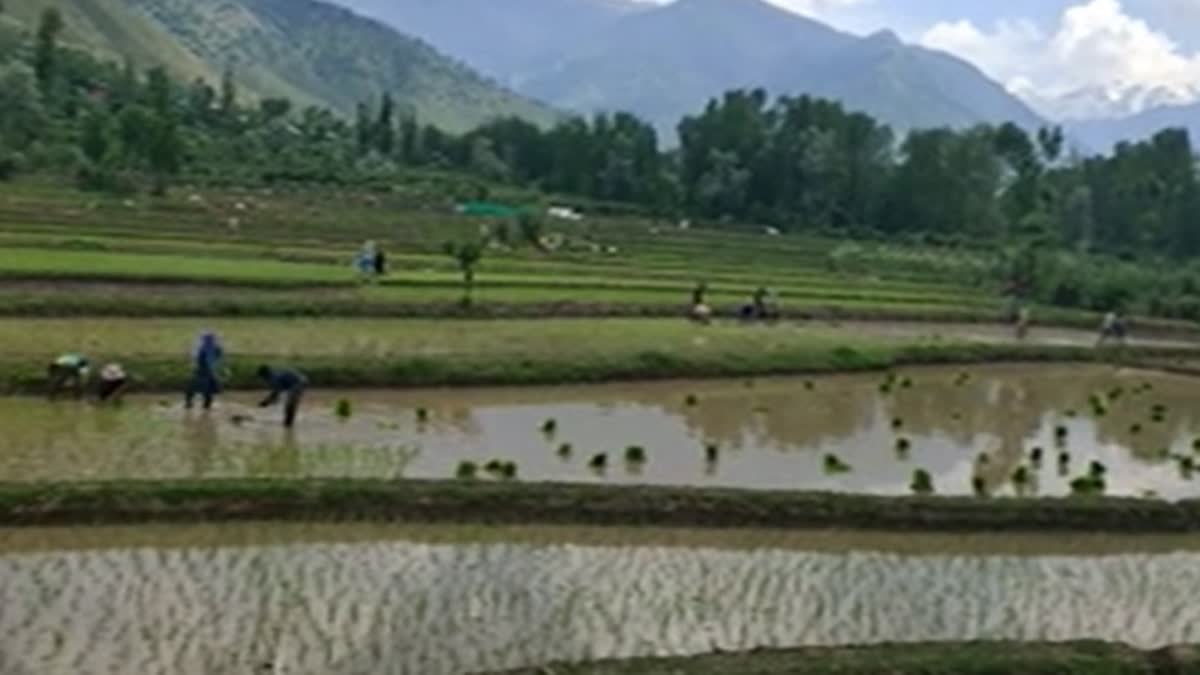Srinagar (Jammu and Kashmir): Mushkbudij, an aromatic rice variety native to Kashmir, is poised to enter international markets as the local Agriculture Department expands growing areas in the valley due to high demand, officials said on Tuesday. Mushkbudji, which is exclusively cultivated in the valley, has already been granted GI tag by the government, and the conservation of the rice variety has been recognized at the state and national levels with the grant of Rs 10 lakh as the "Genome Saviour Community Award."
The award is given by the Protection of Plant Varieties and Farmers' Rights Authority, Ministry of Agriculture and Farmers Welfare to farmers for saving and promoting the production of those varieties. The rice variety of Kashmir was farmed on a large scale basis in the early 1990s. Its production, however, took a hit when exotic species, which provided higher yields to farmers, were introduced in the valley.
The resurrection campaign began in 2007 with a review of specialized locations where the strains of the indigenous variety were found out through various sources. Under the revival program, the village of Sagam in the Kokarnag belt and surrounding villages were chosen for a demonstration on purified Mushkbudji.
An excellent example of collaboration between SKUAST-Kashmir, the department of agriculture, and the farming community was witnessed in the effort of popularizing the variety among farmers in the belts of district Anantnag. According to officials, Kashmir valley produced around 5,000 quintals of Mushkbudij rice in the last three years.
Also read: Landmark move: Geographical Indication Tag conferred on Kashmiri carpet
"Mushkbudij rice production in Anantnag, Ganderbal, and Baramulla districts was 14.54 quintals in 2020, 17.45 quintals in 2021, and 17.38 quintals in 2022," official data said. According to statistics, Anantnag district in south Kashmir alone produces 44.86 quintals. Officials said that after Anantnag, Baramulla, and Ganderbal, Muskbudji rice cultivation will be expanded to Kulgam and Kupwara districts.
According to official data, 244 hectares were brought under cultivation of Muskbudji rice in 2020, 248 hectares in 2021, and 280 hectares in 2022. "For the next five years, the proposed plan for Muskbudji rice expansion in Kashmir valley is 999 hectares of land," an official said. According to Dr. Tasneem Mubarak, Chief Scientist Agronomy MRCFC—SKUAST-K, Mushkbudji was a traditional crop in Kashmir, but it was abandoned owing to blast disease and new varieties with excellent yield and disease resistance.
Leaf blast harmed productivity, thus SKUAST-K initiated a resurrection program in which all strains were gathered and tested, Dr Tasneem told ETV Bharat. He said the agricultural university created a blast-resistant version of Mushkbudji that can be grown in plain areas, but it is still being tested. “Demand for it is increasing by the day," Dr Tasneem remarked.
Chowdhary Muhammad Iqbal, Director Agriculture Kashmir, said that Muskbudji rice has GI tagging and that more and more areas are being brought under its cultivation. "The same is in demand in the international market." Iqbal further said that they have expanded the cultivation area 120 hectares to 500 hectares, with plans to grow it on 1000 hectares in coming years.
The famed Mushbudji rice variety of Kashmir costs between Rs 15,000 and 20,000 per quintal.



